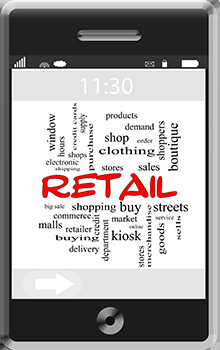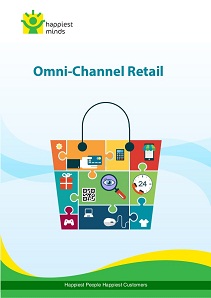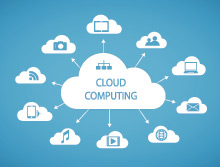Christmas cheer is just around the corner. It’s a season for relaxing with loved ones, eating good food, and of course, shopping for presents to put underneath the Christmas tree. Retailers are all geared up to ensure they are best prepared to address a myriad of possible challenges during the festive season, including operational, technical and staffing issues. The top concern is, of course, ensuring security of transactions and not becoming the victim of yet another breach, which we have heard a lot about over the past couple of months; especially high profile attacks such as the three e-tailers that were affected by DDoS attacks in October.
On the customer experience side however, expectations are riding high on ‘bricks and mortar’ retailers to prove that they have something more to offer than just offers and discounts. Technology has definitely started paving the way for retailers to transform their stores into places offering a multichannel experience, along with retailers being able to actually gauge whether their investments are giving the best bang for their buck, through groundbreaking data analytics techniques focused around consumer habits. Just by leveraging Bluetooth technology and in-store Beacons, stores can get started on refining in-store user journeys and navigation around a high street shop. The technology also helps measure whether retailers’ refinements to store plans are actually giving the desired results – be it in terms of higher footfall, conversions or customer engagement with specific holiday campaigns.
Beacons and Bluetooth low energy solutions to decode and streamline customer navigation in-store
Beacon technology today is gaining fast acceptance and many retailers are attempting different ways of applying this technology to create unique customer engagement scenarios in-store. For instance, mapping beacons to store floor plans and then continuously tracking the path of a customer in-store can now show consumer behaviour in a way retailers could never do before; a way which is not too dissimilar from following consumers’ click paths when online shopping. This data is a powerful starting point for retailers to gather huge insights into consumer behaviour, when combined with customer specific data (for example past purchase history) or even for post-purchase analysis when combined with transaction data.
Below are a few ways for retailers to get started with beacons, and some tips on how to use the technology to get the most out of the data collected:
- Gift zones must stand out in-store to streamline customer flow and traffic hot spots.
Break down the gift zones further by, for example, creating sections for different hobbies or age demographics and in turn, this will optimise floor traffic and avoid store bottlenecks. Insights from this zone will be critical for your next holiday season planning.
- Grocery stores should target specific food-based aisles.
Start your beacon trials at specific locations that are non-commodity type products for example, near confectionary and wines, where you want to get insights on how your customers are flowing through and possibly trigger promotional offers for specific customers, based on their dwell time and past purchase of specific vintage or variety. Then think about expanding in to the rest of the store.
- Speciality retailers should think about picking the most popular areas in their stores to trial beacons.
When customers encounter bottlenecks at popular areas in-store, direct your store staff with mobile point of sale devices to ease traffic flow and navigate them away from your traditional checkout counters.
- General merchandisers and pound stores – think of theme based aisles, specifically for children and teens where beacons can be piloted.
Ensure beacon based engagement introduces customers to new gifting options and offers, for example best sellers, trending items or specific customer interests.
- Equip and educate store managers and store staff on what to look for in the beacon dashboards
– heat maps indicating high traffic zones, lost customers who are in need of assistance as they wander endlessly, busy point-of-sale counters etc.
Ultimately, Bluetooth and beacon technology has the ability to distinctly improve both the customer experience, and also the retailer’s understanding on how people navigate around a specific store. Being able to avoid bottlenecks of people in a precise area of the shop, or guiding the customer efficiently through a store based on the location of certain aisles, can really make all the difference to a customer coming back to shop in that store, alongside finding the goods that they want in the quickest time possible. It’s a win-win situation for both customer and retailer, especially as we are leading up to the busiest shopping period of the year.
Published in : Digital Marketing Magazine

Anitha is a former Happiest Mind and this content was created and published during her tenure.







